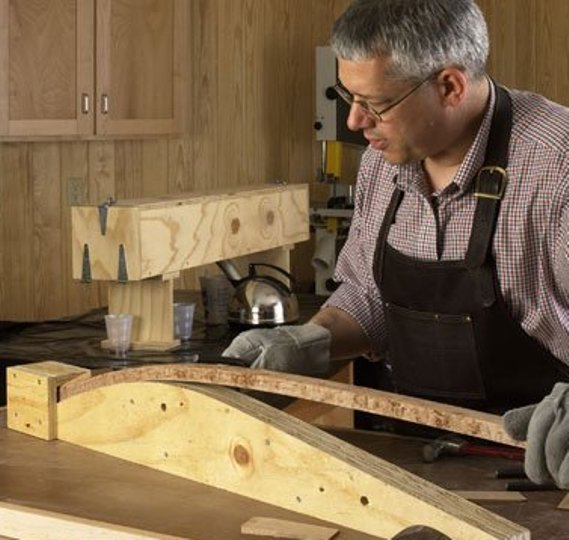Instruction
1
For making curved parts from wood apply two basic ways: cutting out the pattern and bending the pre-steaming of wood using the template on a special machine. The first method leads to cutting of fibers and loss of strength of parts. The bending also provides a high percentage of useful output parts and considerable strength. Bent parts can be finished with high quality and subjected to various mechanical processing (profiling, forming spikes, lugs, etc.).
2
The ability of wooden Board to the bending is determined by the plasticity of the wood depends on the wood. Beech, birch, oak, pine and spruce have the highest plasticity. But you can control the plastic properties of the workpiece, and its hydrothermal treatment.
3
At 100 ° C and a humidity of 30% of the substances included in the composition of the cell material enters the gel state, while the walls of cells and fibers of the wood becomes elastic and soft. Such wood is easy to bend. After drying, the bent Board retains the shape given to it, because the colloidal substances harden.
4
Machining consists in boiling it in hot water or steaming with saturated steam of low pressure. Steaming is more common, since this treatment the wood is heated evenly, does not occur excessive moisture of the wood.
5
When thus treated Board is bent on a curve or in a special clamping device, material having internal stress. The wood stretched on the convex side and compressed on the concave. In the middle of the neutral layer voltage is equal to zero.
6
The outer layer is under tensile stress will have the elongation, and the inside will be shorter. The magnitude of deformation depends on the thickness of the docks and bend radius. To limit the elongation of the grain of the wood and to prevent their possible rupture on the convex side of the bent parts impose a splint of steel with a thickness of 2.5 mm Billet Flex with the tire. In this case the neutral line goes to the side of the stretched fibers off the Board, and bending only occurs due to the compression.
